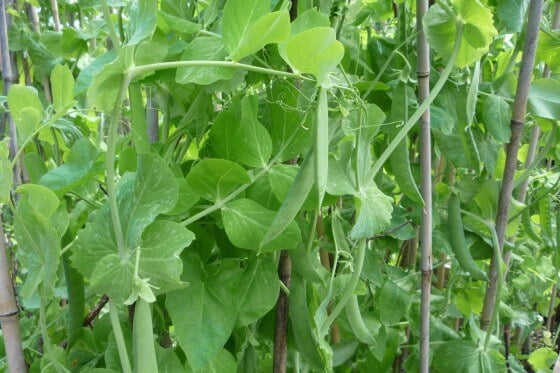Pea – Vegetable garden

Peas are one of the most anticipated of all our garden crops. Maybe because they are one of the first things to be harvested after a long winter or maybe because a pea eaten fresh from the garden is one of the tastiest things you can eat. But for whatever reason, I think peas are a must in any garden. Peas are little powerhouses! They may be low in calories, but peas are packed with a surprising number of antioxidants and anti-inflammatory agents. Pea is also high in micro-nutrients, vitamins, fibre, protein and minerals that provide us with a wide range of health benefits.
Varieties:
Peas include the garden pea that we shell and edible podded peas like sugar snap peas and snow peas, which don’t have a tough pod as the common garden pea and can be eaten whole. Snap Peas, also known as sugar snaps are an edible pod variety which have a rounded pod. Snow peas are similar to snap peas but have a thin shaped pod.
Scientific Name: Pisum sativum
Common Name: pea
 How to grow and maintain Pea Plant:
How to grow and maintain Pea Plant:
Planting:
Peas prefer a deep, loamy soil. They require a sunny, nutrient-rich, moisture-retentive site. Dig over the soil and add plenty of organic matter as this will help to improve the soil’s moisture-retaining ability.peas are planted out in in late autumn or winter as they require cool, moist growing conditions. Temperatures above 30C will cause early maturity and small crops. Frost can make the flowers sterile or cause a white mottled skin on the pods. Peas will grow well in soil that has recently has a tomatoes as they add nitrogen to the soil. A complete fertiliser is recommended for optimum crops.
Watering:
Start watering when seedlings are 5-10cm tall, gradually increasing the depth of watering as they grow. Maintain consistent soil moisture to ensure good-quality returns. Mulch soil to trap in valuable moisture.
Harvesting:
Peas form pods about 10 weeks after planting. Pick peas for shelling when the pods are just plump. Don’t let them get too old check plants daily when they’re in full production. Harvest just before cooking for the sweetest flavour. Peak harvest lasts only 3 weeks or so, but successive sowing once a month will ensure an ongoing supply. Bumper harvests can be lightly blanched and frozen.
Pests and Diseases:
Root rot disease and fusarium wilt is somewhat common in peas. This is a fungal disease that initially stunts growth of the entire plant. If a mature plant is infected, it will significantly reduce crop production. Planting in a well-drained area will help prevent this problem that is usually encouraged by overly wet or damp conditions. If your garden is in a wet area, you may need to consider using a raised bed for your pea plants. Purchasing disease-resistant varieties can prevent fusarium wilt.
Last updated on February 28th, 2017

Leave a Reply